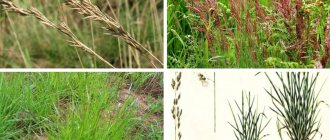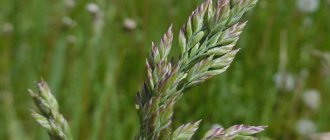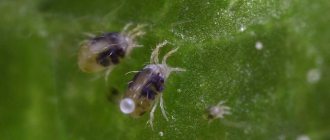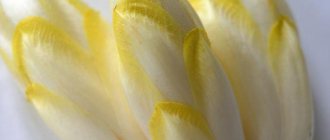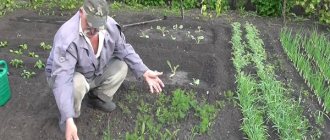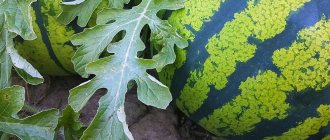Top 5 Incredible Fescue Varieties
There are many varieties of fescue, which can help create a unique ambience in your garden. Various varieties of fescue can be purchased in our store.
| Variety | Description | Height |
| Glacial Titmouse | Lush bush with needle-shaped, steel-blue leaves. | Up to 40 cm. |
| Blue Hump | Thin and long needle-shaped leaves of a bluish-azure color with unusual small flowers. | 30 cm. |
| Gray Elijah Blue | The bush changes color depending on the lighting from gray-blue to blue. | 20-30 cm. |
| Sizaya Festina | It has blue-green leaves with soft panicles. | 20-60 cm. |
| Golden Toppy | A small bush with a bright green color. | 20-25 cm. |
Fescue in landscape design
Among the rocky masonry, along the perimeter of the flower bed, on the lawn or near the border, lush fescue bushes in green, light green, blue or bluish shades look simply excellent. It was also noted that the root system of this plant strengthens the soil, so it is used to prevent landslides. Various varieties of fescue, differing in the shade of their foliage, are often planted on slopes. The result is an amazingly beautiful panel.
This perennial can be planted together with mantle, tradescantia, miscanthus, bellflower, hosta, speedwell and lungwort. Fescue is also often grown as a regular lawn, with bushes planted more evenly.
Loading…
Conditions for growing fescue from seeds
Growing fescue by seed is very simple, and there are several approaches, one of which is sowing seeds in open ground.
- Sowing seeds before winter. This process begins in October by loosening the soil and removing weeds (select light and dry areas). The seeds are not sown very deeply, and covered with snow in winter.
- Sowing seeds in spring begins in April. Pre-prepare holes into which 3-4 seeds are placed. Water the seedlings very carefully so as not to harm the weak shoots. In this way, you can get a lush bush in the first year.
Sometimes another method of propagating fescue is used, namely by seedlings. It is used to obtain ready-made seedlings even before planting in open ground. It is recommended to start this process at the end of February, or, in extreme cases, at the beginning of March. Cups, boxes or special containers are perfect for future seedlings.
In most cases, gardeners use ready-made soil for succulents. But you can also make a special mixture yourself. To do this, you need to mix sand, leaf soil, perlite and peat in equal proportions. To prevent small seedlings from dying from excess moisture, a layer of expanded clay drainage is placed at the bottom of the container.
As soon as the seedlings reach a height of about 3 cm, they are picked into separate cups or several pieces into one container, using the nesting method.
The children went to school - it was time to divide the fescue.
It is believed that the best time for dividing perennials growing in dense tussocks (hostas, dense bush grasses, heucheras, etc.) is the end of summer - the beginning of autumn. I confirm that this is indeed the case. But as experience shows, for some plants this rule is nothing more than a tradition.
I divided fescue with equal success in the middle of summer, in August, and in September. You can divide it in the spring. The only thing to consider is that the soil must be constantly moist. Therefore, in our country, its division at the lowest cost takes place in early September. At this time, there is practically no need to water it - natural precipitation is enough. And most importantly, it easily breaks down into autonomous divisions, as a result of which it takes root faster and more successfully.
But she will have to grow next year. By the end of its first summer, fescue takes on the appearance of a round or slightly flattened “hedgehog” with a diameter of 10-15 cm. After a year, it spreads into a saucer or plate with a diameter of 20-25 cm. And with age, an individual plant can grow up to 60-70 cm in diameter.
Conditions for growing fescue
Fescue is not very demanding in care, but there are a number of points that must be taken into account when planting this beauty.
- Lighting.
Fescue requires a lot of light, without which it can lose its color saturation. Therefore, it is recommended to choose sunny areas rather than partial shade.
- The soil.
Dry areas, where there is no excess moisture and water settling, are excellent for growing fescue. Also avoid highly acidic soils. This way the beauty of this plant will be fully revealed.
- Drafts.
Fescue is very negatively affected by blowing winds and drafts, so be sure to take this point into account when choosing a site for fescue.
One of the advantages of this plant is its unpretentiousness in the choice of soil. Fescue trees do not need to grow in nutritious soil. She feels great on rocky areas, for example, on the slopes of rockeries.
Red fescue - description and features
Different types of red fescue are common in nature.
They grow in meadows and pastures of Europe, Asia and North America. The plant is cultivated for landscaping lawns and summer cottages, to complete compositions in landscape design. It is valued for its ease of care, spectacular appearance, and high percentage of seed germination. Fescue combines several varieties of perennial grasses with a height of 20 to 70 cm. They have a creeping rhizome, due to which they quickly spread over a large area. The leaves are narrow and long, directed upward along the stem. They can be painted in different shades of green, blue and gray, some are covered with a waxy coating.
A decorative fescue lawn lasts for 10-15 years. In the first year after sowing, it is not too thick and covers the soil only after 2-3 months. Then the fescue grows and completely covers the soil. This occurs due to the grass’s independent propagation by seeds, as well as the rapid growth of the rhizome.
Red fescue reproduces by seeds. They appear in the summer, after the end of the flowering period. The seeds are oblong, dark and very small. 1 g of seed mass can contain up to 1000 seeds. They are sold ready for sowing, in packages from 1 to 15 or more kg. The recommended sowing density is 30-35 g per 100 square meters of area.
The description of red fescue states that the lifespan of a lawn is up to 15 years. However, achieving such deadlines is only possible with regular watering and fertilizing.
Fescue care conditions
- Fescue does not need separate fertilizing, but if the plant has been grown for many years in one place, it is recommended to fertilize it with mineral fertilizing.
- Every 2-3 years the bushes should be divided and rejuvenated to prevent the bush from overgrowing.
- Fescue overwinters well without shelter, since its rhizomes do not freeze. In spring, such bushes are cleared of dry leaves, loosened the soil and watered abundantly.
Fescue is very unusual in our regions, but at the same time it does not require a lot of attention when planting and caring, like most ornamental crops.
Author of the article: Oksana Visochanska
To lay a carpet
Gauthier fescue is winter-hardy, but in severe snowless winters its grass may freeze to varying degrees. Nothing terrible, however, happens to the plant. It’s just that fescue partially or completely loses its evergreenness. But, since the roots of the plant are too tough for frost, by the beginning of summer its “lawn” is completely restored.
Fescue is sun-loving, although it tolerates temporary lateral partial shade without consequences. It is drought-resistant, but forms truly emerald carpets with heavy rainfall. It is not picky about the presence of humus, but grows best on highly fertile, loose sandy loam soils.
Landing place. The soil. Fescue grows best in more or less elevated areas, with deeply drained, light soils. Open, level places are also good, especially where a fertile layer 10 cm thick has been created on a deep sandy base. Approximate soil composition: turf soil, humus (peat), sand 1:1:3. pH = 5.5-7. Initially sandy loam soils improved with large (up to 8-10 buckets/m2) doses of peat are also favorable for fescue.
Feeding. Watering. On well-prepared soils, fescue not only forms picturesque lawns, but also does not require any significant attention. But fertilizer coupled with watering will allow you to achieve the highest decorative effect. It’s worth remembering here that in places where fescue naturally grows, the average annual precipitation reaches 3000 mm. In the Moscow region, for comparison, it is 550-600 mm. So fescue doesn’t just like watering - you can’t overdo it. But it is very important that moisture is quickly removed into the deep soil horizons.
Fertilizer is also good for her. You can fertilize throughout the season, but organic matter (peat chips, fluffy humus) should be applied in early spring and autumn. This is done in small doses (50-100 g/m2), evenly sprinkling the “lawn” on top. It is better to add the mineral component (a mixture of NPK, urea, ash - 3-5 g/m2) only in the spring.
Reproduction. Fescue is propagated by dividing the sod in late summer - early autumn. At this time, by the way, the fescue bushes themselves break up into separate parts that take root well. It is especially successful to divide fescue in August with the onset of rainy, moderately warm weather. It is advisable to first plant the delenki in a separate bed - a shkolka. By cold weather, plants, as a rule, acquire roots and grow slightly. In mild autumns they can be planted in a permanent place.
Plant varieties
There are 3 main varieties of fescue for growing at home. They differ in appearance, but combine all the advantages of the species: ease of care, resistance to weather conditions, uniform distribution throughout the area.
Best representatives:
- Red fescue is a variety that produces a uniform lawn of bright green color. The leaves are narrow, erect, without a waxy coating. At the end of spring, the flowering period begins, neat inflorescences-panicles of a dark red-brown hue appear. The plant is included in most shady lawn mixtures because it retains rich color in shaded areas.
- Red fescue is the most resistant and unpretentious variety. It forms a dense, dense cover due to the presence of underground shoots (rhizomes). They spread throughout the entire area, so the lawn is uniform. Red fescue is often used not only for landscaping and landscaping, but also for golf lawns.
- Red hard fescue is another popular species. This plant does not have underground shoots, but the green mass grows very quickly. The leaves are strong, straight and very thin, rich green in color. The variety is popular in regions with a cool climate and significant temperature changes in winter, as it tolerates frost more easily than others. It is recommended to combine hard red fescue with other varieties due to its lack of underground shoots. Other species will help fill gaps in your lawn.
All varieties of red fescue are suitable for growing in temperate climates. They form a continuous green carpet, on which contrasting panicle inflorescences appear in early summer. The appearance of your lawn largely depends on its care. Moderate watering and regular pruning are necessary to keep plants healthy and tidy.
Reproduction
Black elderberry: description, scope of application, where it grows
Before you start sowing plants, you need to prepare the soil. Although fescue is an unpretentious grass and can grow in any soil, it feels best in fertile soil. The plant reproduces in three ways.
Sowing seeds
To plant seeds over a large area, you can use special seeders, and if you need to sow a small area, you can sow manually. It is best to sow grass in the fall, then next year at the end of spring a beautiful lawn will already be formed. It is recommended to sow grass using the nesting method. To do this, you need to make a small depression in the ground and pour some seeds there, then sprinkle earth on top. The next hole should be made at a distance of 20 to 25 cm. Fescue seeds can be collected independently after the grass has bloomed, or bought in a store.
Sowing seeds
Seedlings
For this method, you must first prepare boxes of soil. It is advisable to add peat and sand to the soil. After this, fescue seeds should be scattered over the surface of the prepared soil and lightly compacted. The boxes should be moved to a cool, dark place. After the sprouts appear, the seedlings can be placed in a bright place. Sprouts that have already developed several leaves are planted in the ground. The grass should be planted in bunches at a distance of 20 to 25 cm from each other. It is recommended to sow seedlings in March, so that ready-made seedlings can be planted on the lawn by the end of May.
Dividing the bush
This method of reproduction is relevant at the beginning of summer. To propagate fescue, you need to dig up the grown plants and divide them, then plant them in prepared soil.
Note! In order to get a thick cover on the lawn, you need to use more seeds or seedlings for one hole. As they grow, strong shoots will displace weaker blades of grass, leaving behind well-rooted and resilient plants for the winter. Such a fescue lawn will easily survive frosts and winter weather, and in the spring it will delight you with a thick grass carpet.
Planting fescue seedlings in open ground
Young fescue seedlings are not yet resistant to frost. Therefore, seedlings can be planted in open ground in the spring only when the threat of return spring frosts has passed.
In general, fescue is undemanding in terms of care and cultivation techniques, but it has a number of requirements for the planting site. In order for fescue to reveal its beauty and decorativeness to the maximum in the garden, you must immediately choose the right place for planting. Seedlings must be planted taking into account the following requirements for the site:
- the place should be bright, sunny, without shading (shade will negatively affect the color of the plant);
- the soil should be dry, not waterlogged, without stagnant moisture and high groundwater;
- the soil should be neutral or slightly alkaline, but planting on acidic and slightly acidic soil should be avoided;
- Also, the land is desirable to be drained, infertile, without organic fertilizers. Rocky or sandy conditions are great;
- The place for planting fescue must be protected from strong northern winds and drafts, as they will adversely affect the health and condition of the ornamental grass.
Planting fescue seedlings is done as follows:
- A couple of hours before the procedure, water the seedlings.
- Make holes in the garden. The distance between them is 15 centimeters. The size of the holes should be slightly larger than the earthen ball of the seedlings.
- The seedlings along with the earthen ball should be removed from the old container.
- Plant the plant in the hole using the transshipment method, preserving the earthen clod.
- Fill the voids in the hole with soil and compact the soil with your hands.
- Water.
In this simple way you can start growing a wonderful ornamental grass. The plant will be appropriate and interesting in any garden plot, be it a summer house or a private plot of a private house. It looks great both in compositions and single plantings. An ornamental deciduous plant can transform alpine slides, rockeries, and mixborders.
